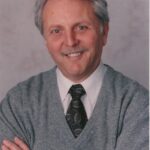Treating Cancer in a Multidisciplinary Setting
Dan Labriola, ND
Introduction
There is no shortage of potential natural treatments for cancer. They are in literally every natural medicine journal in articles, advertising, reviews and original research.
What you won’t find, however, is a corresponding number of opportunities to administer them to patients. For the primary-care NDs who make up the heart of this profession, a patient’s cancer diagnosis frequently means losing some access to that patient when the patient needs us the most. Many oncologists, concerned about well-documented, potentially devastating interactions and their own inability to differentiate between beneficial and harmful unconventional treatments, discourage natural medicine during conventional treatment.
The good news is that the world is starting to change. A growing number of large, tertiary, conventional cancer care hospitals and facilities are introducing multidisciplinary programs that include naturopathic medicine. Multidisciplinary care has been around forever, but the new focus on this concept is an opportunity for patients to have access to naturopathic services in literally thousands of institutions that provide the most cutting-edge research and treatments for cancer. NDs do not need to be “cancer experts” to remain an integral part of a patient’s care during cancer treatment.
My personal bias is that NDs should be recognized and compensated as competent, unique, physician-level providers. This article focuses on strategies for gaining access and status throughout a patient’s cancer treatment, and will include strategies that have been successful for the group I work with.
History of Naturopathic Medicine
The best way to understand how the current medical industry affects the naturopathic profession is to review how we got here. Many excellent treatises describe the last century of healthcare in North America, including Starr (1982). Here is a summary of the most significant events that have affected modern naturopathic medicine and cancer care.
In the late-19th and early-20th century in North America, there were three dominant medical groups: the allopaths, the botanical/natural medicine group and the homeopaths. The first notice of “naturopathic medicine” came at the turn of the 20th century.
In 1910, Abraham Flexner, a young educator, published the now famous Flexner Report. As a representative of the American Medical Association and the Carnegie Foundation for the Advancement of Teaching, Flexner evaluated medical education facilities and presented his results in his Bulletin Number Four. The Report was a scathing critique of medical schools in North America, resulting in changes to state licensing laws that eventually caused the demise of many of those schools. Medical colleges were already in decline, decreasing from 162 at the turn of the century to 131 at the time of the Report. By 1915, the number was further reduced to 95. Allopathic institutions had the best funding at the time, and the best survival rate. The homeopathic and botanical/natural medicine schools were less fortunate (Flexner, 1910).
The Report and resulting school failures left allopathic medicine as the clearly dominant force in health care with growing numbers, control of treatment institutions, pre-eminence with emerging 3rd-party reimbursement and general public acceptance. The relatively unlimited medical practice acts that followed the Report cemented that control. The botanical/natural medicine and homeopathic professions continued, but were severely limited by reducing numbers, a lack of resources and declining public acceptance (JAMA, 1922a; JAMA, 1922b).
Fast-forward to 1956, when NCNM came on line, followed two decades later by John Bastyr College of Naturopathic Medicine (now Bastyr University) and Ontario College of Naturopathic Medicine (now CCNM) and, thus, the revival of naturopathic medicine. With new graduates and a solid footing in science, the small profession started to grow and kept alive the principles of natural medicine that were arguably the basis for the complementary and alternative medicine (CAM) movement and the industry that followed.
More than a half-century since the emergence of NCNM, NDs’ numbers have increased and the naturopathic community has credible education in both the U.S. and Canada. Many elements of naturopathic medicine are receiving growing acceptance, and the naturopathic profession has carved out a niche in North American healthcare. Considering the small numbers and limited resources, no one would have predicted naturopathic medicine’s survival. The historical perspective is important because the naturopathic profession still faces many of the same problems; namely, small numbers and limited resources. History also proves that its unique, comprehensive, physician-level system can survive against tremendous odds, but not without sacrifices.
What Makes Naturopathic Medicine Unique
Naturopathic medicine is much more than the sum of its individual modalities. NDs already know this, but most of the rest of the world, including most conventional cancer programs, do not … yet.
In my last years at Bastyr, I had the good fortune to preceptor with Dr. Bastyr. One of the first patients I saw with him was a 40-year-old female with severe gastroenteritis, chronic debilitating fatigue and global arthralgia. Dr. Bastyr put together a program addressing digestion, absorption and elimination; added some manipulation therapy; counseled her about diet and stress; and prescribed botanicals. The patient was resistant at first, saying she had done all of these treatments before with a combination of herbalists, chiropractors and others. Why would this work now when it hadn’t in the past? His answer was simple: It’s not the individual treatments that make naturopathic medicine unique, it’s the guiding principles by which they are combined and administered.
The patient returned three weeks later. Her symptoms had improved dramatically, she was off most of her suppressive therapies and she reported that she had never felt better. To her, this was nothing short of a miracle.
These principles were part of Naturopathic Philosophy 101, but there was nothing like a live example to jar the brain of a crazed, sleep-deprived naturopathic student. Helping nature heal, taking into account the entire host organism, approaching homeostasis, doctor as teacher and finding the root cause all combined to create a result far beyond the sum of the individual treatment components. That experience with Dr. Bastyr taught me the difference between administering interventions and practicing naturopathic medicine in its most powerful form.
The good news is that the conventional medical model increasingly understands this concept as it applies to our profession.
Current Status of Cancer Treatment in North America
Cancer treatment, including the latest cutting-edge research and therapies, is mostly provided in large, multi-disciplined institutions by medical, radiation and surgical oncologists and a variety of other, frequently integrated professions. Most services are paid for by private, government and entitlement insurances. Naturopathic coverage exists in some programs, but coverage is less than stellar. Access to these patients and treatment facilities is largely controlled by the medical and administrative staff of the institutions. Naturopathic access remains low, but it is growing.
Proof of this trend is everywhere. For example, I hold medical directorships in several large cancer programs where my Northwest Natural Health Specialty Care Clinic colleagues and I practice the full scope of our profession and fill leadership roles. There is no question in these institutions that more naturopathic medicine is to come.
All NDs should feel comfortable treating cancer patients in a multidisciplinary environment, especially primary, family care physicians. There are many such opportunities that not only increase healthcare choices for consumers, but also provide the basis for improved utilization and rewards for NDs. For established naturopathic patients, such treatments ensure continuity of care and confidence that is vitally important to those who are venturing into the world of conventional cancer care.
A Successful Model for Naturopathic Cancer Care in a Multidisciplinary Setting
New conventional cancer technology mechanisms, including targeted therapies, a variety of new radiation techniques, significant surgical advances and strategies for combining them concurrently, have resulted in a new body of knowledge that now also includes a much better picture of drug-nutrient and other potential interactions.
Naturopathic treatment in concert with these modalities requires an understanding of their medicine as well as ours. Primary-care physicians or those settled in another specialty, however, can still play an important part in the patient care picture without adding a whole new discipline.
Decide how involved you want to be in your patient’s cancer care. If your practice is not focused to a great extent on cancer, you have three choices: 1) continue your current clinical focus and participate in your patient’s cancer care; 2) become a cancer expert; or 3) release your patient during this period. The correct answer is the one that works for you, but I will argue for you to consider the first option. The ND who has provided continuous, trusted care over the years is the one who will get the best compliance and provide the most confidence and support during the stress of cancer treatment.
You can participate in your patient’s care at the level you wish. The most aggressive route is to learn enough about the planned treatment, interactions and so forth to effectively guide your patient through the treatment process on your own. You also have the option to partner with an established naturopathic cancer program to provide care as a team.
The first option is more work but certainly achievable if you have the time and interest in learning this technology. If you choose this route but still need help, our clinic doctors frequently answer questions and provide guidance for ND colleagues as a professional courtesy. The second choice, a consultative referral, is where you get a measured level of support from a specialist; you decide how much. At our clinic, the most common format is where we implement a specialized review of systems, evaluate patient status and review current and planned conventional treatments. We use this information as the basis for a tailored naturopathic plan that is administered and dispensed by the referring doctor. (See the accompanying story, “Consultative Referral Strategies,” for suggestions.)
Modern cancer care is multidisciplinary; use this to your advantage. Oncology patients in modern institutions are treated by a variety of medical specialties; allied professionals, such as physical therapy; and CAM treatments, such as massage. It is no longer a one-person show. This is an attractive offering for patients who need cardiology, orthopedic or other concurrent, specialized care and don’t want to be shuttled to different institutions. Multidisciplinary groups are always searching for more knowledge, and this is an opportunity for NDs.
Effective team players understand, respect and communicate with other professionals using understandable concepts and language. Clear, transparent communication will garner the respect of the multi-disciplinary team members who don’t already have a foundation for understanding naturopathic medicine.
Cancer diagnoses and treatments are not necessarily intuitive. Understand the fine points. Tumor behavior and response to treatment is increasingly predictable with genetic expression measurements, new radiological techniques, fine differentiations of tumor grade, endocrine factors and more. These technologies affect treatment, prognosis and, ultimately, the use of naturopathic care.
Conventional cancer treatments in the last few years are much more sophisticated but not always intuitive. Many treatments use free radicals to ultimately kill tumor cells, even though these same agents and procedures are carcinogenic. Others kill tumor cells by interfering with metabolites that are necessary for the immune system to fight the cancer. And the list goes on. Whether or not you agree with the conventional treatment, once the patient has made that decision, it is important that nothing interferes with the potential benefits of that treatment.
Evidence-based medicine (EBM) is here to stay. Be prepared! EBM is the new buzzword that has achieved nearly universal acceptance in the conventional medical world. As with all such phenomena, there are a number of definitions, some that are rational and some extreme.
The original EBM concept was meant to require good clinical judgment and use of the best information available. It would allow traditional, established therapies that had a history of positive outcomes and benefits without attendant risks, but at the same time would eliminate treatments that were truly harmful or ridiculous and claims that were unsupportable. In its most extreme form, however, EBM has been interpreted to say that all treatments must be from repeatable, blinded trials and implemented exactly as the trial was conducted, ignoring the principles of clinical judgment. Fortunately, in many multi-disciplinary programs, EBM principles are applied in a more rational manner.
In our favor is the fact that good practice laws, such as in Washington state, acknowledge and allow for the practice of traditional naturopathic medicine. Combining our well-established, credible tradition with new science provides the high ground necessary to treat effectively in an EBM environment. Omega-3 fatty acids are an example of a traditional naturopathic treatment used with cancer. Their traditional use is well established and increasingly supported as new evidence emerges. Modern scientific data allows us to more accurately administer them at times and at dosages where their potent platelet aggregation inhibition does not interfere or create risks with some diagnoses, drugs, anti-coagulation therapy and surgical procedures.
Know the evidence and be prepared to defend your decisions. Lively challenges of all treatment plans, from surgeons’ proposals to massage protocols, are the rule.
Recognize the real-world limitations of data. The body of knowledge predicting how useful clinical trial data will be for the treatment of cancer in humans has grown in size and accuracy. It is well established that in-vitro and animal testing rarely predict response in humans. Even human trials with optimistic results, but lacking good controls, have turned out to be grossly inaccurate.
Beware of “scientific papers,” advertising, blogs and anecdotes that have financial or other unspoken agendas. There is a common misconception that CAM providers – including NDs – are too frequently influenced by advertising and unreliable information. In fact, all physicians need to be more critical about where treatment information originates. It may be time consuming, but the only way to get the straight scoop is to read the original data and be certain that citations are appropriate and accurate. In the multidisciplinary world, credibility can be easily lost when claims are perceived to be unsupportable.
Traditional naturopathic treatment is still the best. In more than 20 years of practice with thousands of cancer patients, I can say without hesitation that traditional naturopathic care gets the best results. I have used, or witnessed, literally every natural medicine treatment known for cancer. Whether it’s the botanical of the week, the testimonial of the month or the hormone of the year, I have never seen a natural medicine cancer protocol that is as good as traditional naturopathic medicine. New knowledge, science and therapies are definitely an important part of our practice; they add an important component to traditional naturopathic medicine, but will never, in my view, replace it.
Consultative Referral Strategies
- Choose a consultant that can work with your local hospital and medical specialists. A consultative referral is a great way to develop peer relationships with the providers and institutions in your community.
- Make the referral personally, by phone, e-mail or a note. Be clear about your expectations, the level of involvement you wish, special patient needs or challenges, and if you need a referral for a surgeon, oncologist or other provider. You do not need to leave your comfort zone.
- Expect that the patient will undergo a cancer-specific history, review of systems, etc. Cookie-cutter, one-size-fits-all treatments cannot take into account the patient’s individuality or needs.
- Demand a written plan and regular updates. We regularly update the referring physician and the conventional medical providers in writing.
- Supplements should come from your pharmacy when possible. We encourage the dispensing of supplements from the referring physician’s office. If there are special circumstances, we either help you find the correct product or supply it.
- You should remain the point of contact for your patient. We prepare the referring physician for the most common events and remain available if there is something out of the ordinary. If the program becomes complex or requires very short response times, such as with some complications, transplants and pediatric programs, we can take on more of that responsibility during that period.
We perform consultative referrals for NDs worldwide. Long-distance consultative referrals are governed by telemedicine laws in most states, provinces and countries. Be certain that your specialist can abide by them for your venue.
 Dan Labriola, ND is licensed in Washington, Connecticut and Alaska. He is a graduate of Syracuse University and John Bastyr College of Naturopathic Medicine, has undertaken numerous positions on behalf of naturopathic medicine, and was the founding chair of the Naturopathic Advisory Committee (licensing board) for the State of Washington Department of Health. Dr. Labriola is director of the Northwest Natural Health Specialty Care Clinic; director of naturopathic services for the Swedish Medical Center Swedish Cancer Institute; and director of naturopathic services for Children’s Hospital and Regional Medical Center Children’s Oncology Program. He has been repeatedly voted one of Seattle’s “Top Physicians” in polls conducted by Seattle Magazine.
Dan Labriola, ND is licensed in Washington, Connecticut and Alaska. He is a graduate of Syracuse University and John Bastyr College of Naturopathic Medicine, has undertaken numerous positions on behalf of naturopathic medicine, and was the founding chair of the Naturopathic Advisory Committee (licensing board) for the State of Washington Department of Health. Dr. Labriola is director of the Northwest Natural Health Specialty Care Clinic; director of naturopathic services for the Swedish Medical Center Swedish Cancer Institute; and director of naturopathic services for Children’s Hospital and Regional Medical Center Children’s Oncology Program. He has been repeatedly voted one of Seattle’s “Top Physicians” in polls conducted by Seattle Magazine.
References
Starr: The Social Transformation of American Medicine, Basic Books, 1982.
Flexner, A: Medical Education in the United States and Canada, Bulletin No. 4. New York, Carnegie Foundation for the Advancement of Teaching, 1910.
Medical education-progress of twenty years, JAMA 79:660-661, 1922a.
State requirements of preliminary education, JAMA 79: 658, 1922b.







